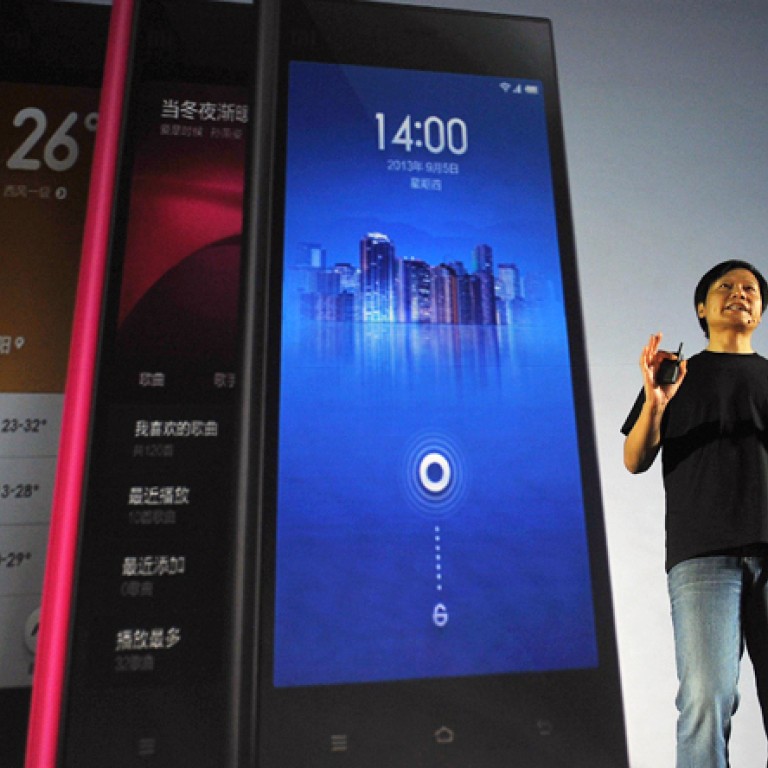
Does Xiaomi's new budget smartphone mean the end for China's cheap counterfeits?
Xiaomi's Mi-3 has launched successfully in China, leaving many wondering about the future of the crowded smartphone market
Chinese smartphone manufacturer Xiaomi released its newest mobile device, the Mi-3, on Tuesday to great success, leaving some buyers wondering if the company’s budget products would lead to the demise of cheap counterfeit phones in China.
The Android-powered Mi-3 was completely sold out in 86 seconds shortly after orders opened on Xiaomi’s website, the electronics company confirmed on its Sina Weibo microblog on 15 October.
Founded in 2010 and sometimes labelled as China’s answer to electronics giants Apple and Samsung, Xiaomi has made a name for itself selling homegrown mobile devices to an audience unable to pay premium prices but still eager for trendy gadgets.
With 7.19 million mobile devices sold in 2012, Xiaomi expects to repeat this success and double its profit in 2013, particularly with the launch of the Mi-3.
Much of Xiaomi’s success comes from the company’s competitive prices – a 16 gigabyte version of the Mi-3 can be purchased for 1,999 yuan (HK$2,543) and a 64 gigabyte version goes for 2,499 yuan (HK$ 3,179). In contrast, Apple’s iPhone 5S is sold in China at a starting price of 4,488 yuan (HK$5,687).
Early adopters of Xiaomi’s Mi-3 shared enthusiastic reactions on Sina Weibo, and many said that the device had exceeded expectations.
“Xiaomi has ushered in a new trend and thoroughly changed Chinese people’s perceptions that mobile phones made in their country are all shanzai products,” one poster wrote.
Shanzai is a Chinese term commonly used to refer to cheaply made mobile phones that resemble models such as the iPhone in all but name. Usually sold at low rates, shanzai devices are sometimes seen as counterfeits, but they have long been an alternative for many Chinese unable to afford a brand name smartphone.
With the rise of Xiaomi, which some bloggers have described as a “legitimate” player in the low-cost Chinese mobile phone market, many have speculated that shanzai devices may soon be outclassed.
A Southern Metropolis Daily interview with a sales representative for a shanzai phone manufacturer in Shenzhen revealed that Xiaomi’s phones, along with other budget devices made by companies such as Lenovo and Huawei, had seriously hurt business.
“Big brands have unceasingly been testing out lower price ranges,” the representative, given the pseudoname Wang Peng, reportedly said. “This has almost completely eroded the survival territory of smaller [shanzai] brands, which are easily defeated in the face of the competition.”
Lei Jun, CEO of Xiaomi, seems to have made outclassing shanzai devices a company priority from the start, and even announced in a 2011 press conference that “Xiaomi phones are quality and the [phones of other manufacturers] are all shanzai.”
But despite Lei’s statement and the positive early response to the Mi-3, not all were optimistic of Xiaomi’s chances to survive in a crowded market or rise above shanzai competition.
“Where does Xiaomi’s future lie, exactly?” one sceptical Weibo user who had not purchased a Mi-3 wrote. “What does Lei Jun want to achieve by aggressively promoting his company? Apple is a special exception – by far and large, all smartphones [in China] will either fall victim to shanzai rivals eventually, or company profits will simply be too low… There are too many big players in the smartphone market already.”

